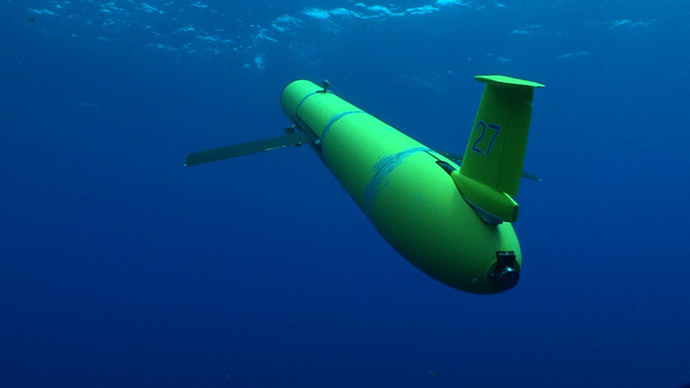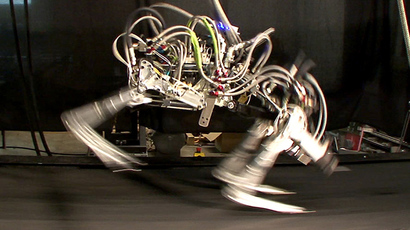Underwater drone fleet’s budget nearly doubled by the Pentagon

Officials at the US Defense Department have requested extra funding for a new fleet of submarines and unmanned underwater vehicles and surveillance drones, according to newly unveiled budget documents.
The Pentagon’s Defense Advanced Research Projects Agency (DARPA) plans to double its current spending from $14.9 million to $29.9 million for the Hydra program. When Pentagon designers debuted the Hydra program they unveiled a large, mothership-like craft capable of moving through the water and deploying a number of smaller surveillance drones.
The budget released last week also shows that DARPA is seeking a 59-percent increase from $11.9 million to $19 million for the Upward Falling Payloads program, with the intention of developing “forward-deployed (drones) that can provide non-lethal effects or situational awareness over large maritime areas,” as quoted by Ray Locker of USA Today.
One of the motivating factors behind the Upward Falling Payloads program is the need to sidestep the costly and time consuming process of transporting distributed technology devices to a specific area. Instead, the Navy would plant those devices in designated areas throughout the ocean and access them by remote during times of need.
DARPA hopes to target nearly 50-percent of the international oceans that are more than 4 kilometers deep. That surface provides “vast areas for concealment and storage…concealment provided by the sea also provides the opportunity to quickly engage remote assets that may have been dormant and undetected for long periods of time, while its vastness allows simultaneous operation across great distances.”
Another 16 unmanned drones will exist only to collect information about the oceans’ currents, temperature, and salt content. These developments are expected to markedly improve the accuracy of studies regarding climate change and weather forecasting. Those drones, equipped with depth meters and GPS sensors, were developed as part of the Challenger Glider Mission, a research project by Rutgers University.
Scott Glenn, the co-leader of the Challenger Glider Mission and professor of Physical Oceanography at Rutgers, told Rhiannon Williams of the Telegraph that the environmental evaluations are an integral part of the budget request.
“The technology underpinnings of this mission are truly enabling our researchers to gather more and better data than ever before, enhancing the basis of knowledge for future generations,” he said.
“Part of our goal with this mission is to increase global ocean literacy. This expanded dataset will enable students and researchers to focus on the science of their local waters, as well as be a part of a global research community, all working toward understanding the ocean’s role in regulating the changing climate and weather.”
The budget report’s publication comes a week after the Pentagon released its Quadrennial Defense Review, which indicated the military is shifting its focus from the wars in Iraq and Afghanistan to possible threats in the Pacific.
“We will continue our contributions to the rebalance of the Asia-Pacific region, seeking to preserve peace and stability in a region that is increasingly central to US political, economic, and security interests,” the Quadrennial report said. “In the coming years, countries such as China will continue seeking to counter US strengths using anti-access and area-denial (A2/AD) approaches.”
Admiral Samuel Locklear of US Pacific Command told reporters earlier this year that he hopes China will not interpret any of the military strategies as a sign of hostility.
“We have to do better at being able to communicate with each other in a way that allows us to not lead to miscalculation,” he said, as quoted by the Voice of America. “That won’t be a productive security environment.”













